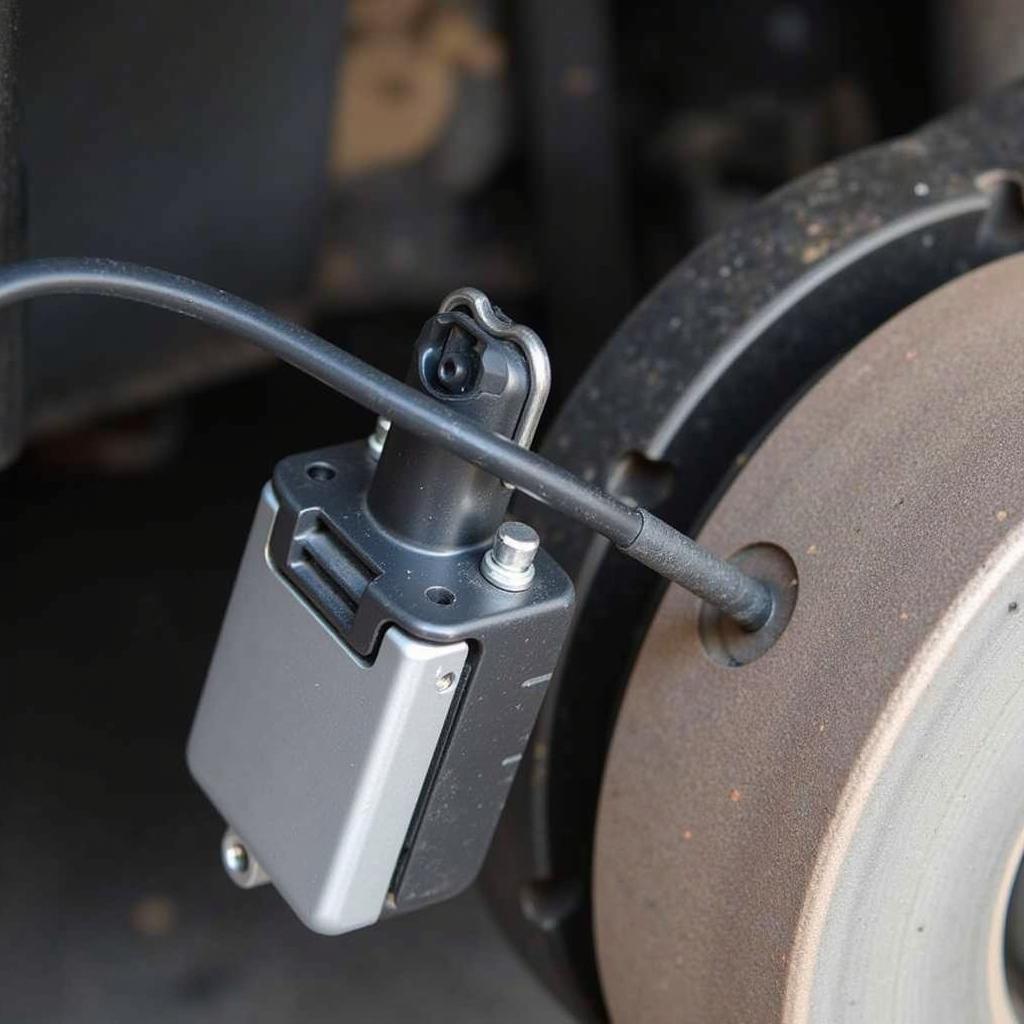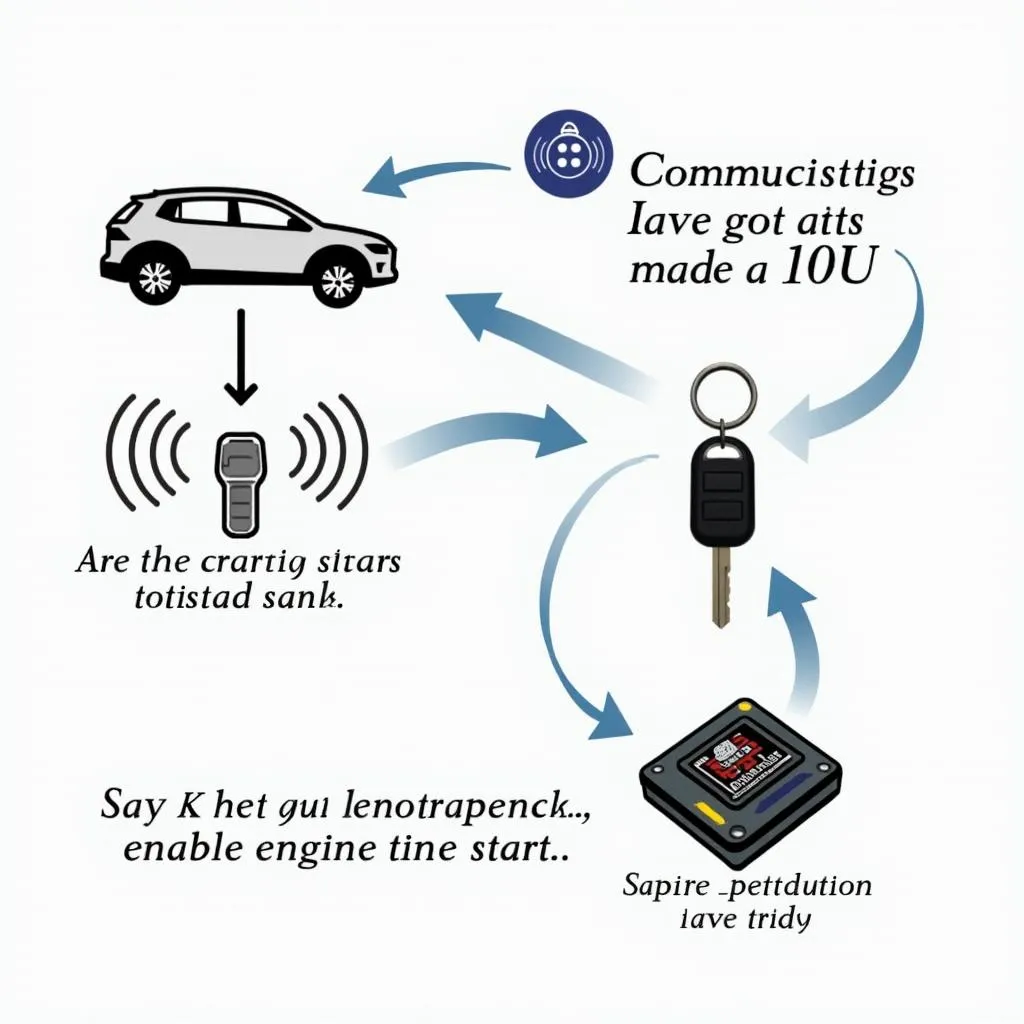BMWs are renowned for their stylish headlights, but sometimes these sophisticated lighting systems can require coding adjustments. Whether you want to customize your DRLs, enable cornering lights, or troubleshoot a malfunctioning headlight, a BMW headlight coding tool can be invaluable.
This comprehensive guide explores everything you need to know about BMW headlight coding tools, from the basics to advanced techniques, empowering you to take control of your car’s lighting setup.
Understanding BMW Headlight Coding
BMWs use a complex network of control modules and software to manage their electrical systems, including headlights. These modules store specific configurations that determine how headlights function.
Headlight coding refers to the process of modifying these configurations using specialized software tools. This allows you to:
- Customize headlight features: Activate features like cornering lights, automatic headlight leveling, or daytime running lights (DRLs) that may not be enabled by default.
- Troubleshoot issues: Fix errors like flickering headlights, faulty bulb detection, or malfunctioning adaptive headlights.
- Implement modifications: Code in changes to headlight settings for aesthetic purposes, such as changing the color of the angel eyes.
Types of BMW Headlight Coding Tools
There are a variety of BMW headlight coding tools available, each with its own features and capabilities. Let’s delve into the most common types:
1. Professional Diagnostic Tools
These are high-end, professional-grade tools designed for workshops and experienced technicians. They offer extensive functionality, including:
- Access to all vehicle modules: Allow deep access to various control units in your BMW, giving you complete control over a wide range of settings.
- Advanced coding capabilities: Support complex coding procedures, allowing for intricate modifications and troubleshooting.
- Real-time data analysis: Provide real-time data streams and error codes, enabling you to diagnose issues effectively.
Example: Pro tool bmw headlight coding
2. Smartphone Apps
Several apps have emerged for coding certain BMW functions, including headlight settings. These apps offer a user-friendly interface and convenience, but their functionality is often limited.
- Simplified coding: Focus on specific adjustments, making them ideal for basic customization tasks.
- Accessibility and ease of use: Can be operated using a smartphone, making them convenient for DIY enthusiasts.
- Limited features: Often restrict access to certain modules and offer fewer advanced options compared to professional tools.
Example: Bimmercode headlight coding
3. DIY Coding Cables
These cables connect your BMW to a laptop or computer and allow you to use coding software. They provide a balance between affordability and functionality.
- Flexibility and control: Offer access to coding software, giving you more control over customization options.
- Cost-effective: More budget-friendly compared to professional diagnostic tools.
- Technical knowledge required: Demand a basic understanding of coding procedures and potential risks associated with modifying your vehicle’s software.
Example: E93 coding bmw headlights angel eyes as drl using protools
Choosing the Right BMW Headlight Coding Tool
The best coding tool for you depends on your needs and technical expertise. Here’s a breakdown of factors to consider:
- Desired functionality: Determine what coding options you require. Do you need to access all modules, or are you only interested in basic headlight customizations?
- Technical expertise: Evaluate your level of comfort with coding and software. Beginner-friendly tools are available, but more advanced tools may require specific skills.
- Budget: Coding tools range in price from affordable smartphone apps to professional-grade diagnostic tools. Set a budget and find a tool that fits your financial limitations.
Example: If you only need to activate cornering lights on your BMW F30, a smartphone app might suffice. However, if you’re troubleshooting complex headlight issues, a professional diagnostic tool is likely a better investment.
BMW Headlight Coding: A Step-by-Step Guide
Once you’ve chosen a coding tool, you can begin the process of adjusting your BMW’s headlight settings. Here’s a general outline of the steps:
1. Connect to your BMW: Follow the instructions for your chosen coding tool to connect to your vehicle. This may involve connecting a cable, Bluetooth pairing, or using a Wi-Fi connection.
2. Access the Headlight Module: Locate the headlight module within your chosen coding tool. The exact path may vary depending on your tool and the specific module you need.
3. Identify Coding Parameters: Within the headlight module, find the parameters you want to adjust. These may include settings for:
- Daytime running lights (DRLs)
- Cornering lights
- Automatic headlight leveling
- Adaptive headlight functions
- Bulb type and configuration
4. Modify the Parameters: Change the coding parameters according to your desired settings. Most coding tools provide clear explanations for each parameter and their potential effects.
5. Test and Validate: Once you’ve made modifications, test the headlights thoroughly to ensure the desired changes are implemented correctly. This may involve:
- Checking the DRL function
- Turning on cornering lights
- Testing headlight leveling in different scenarios
- Observing the behavior of adaptive headlights
6. Save Changes: Save the modified coding parameters to your BMW’s control modules. This process usually involves a “write” or “code” command within your coding tool.
Tips for BMW Headlight Coding
- Backup your coding: Before making any changes, create a backup of your original coding. This allows you to revert to the factory settings if needed.
- Be cautious with unknown parameters: Stick to coding parameters you understand. Modifying unfamiliar settings can potentially cause unintended consequences.
- Consult online resources: Extensive information and guides for BMW coding are available online. Research your specific model and coding needs before proceeding.
Expert Insights on BMW Headlight Coding
“Always approach BMW headlight coding with caution and respect for the intricate nature of the vehicle’s electrical system. It’s best to consult a qualified technician for complex procedures or modifications,” – Johnathan Davies, Certified BMW Master Technician.
“There are numerous online resources and forums dedicated to BMW coding, but it’s crucial to cross-reference information and use reputable sources. Avoid relying solely on unverified information,” – Sarah Miller, Automotive Electronics Engineer.
FAQs
Q: Is BMW headlight coding legal?
A: Coding certain headlight features can be legal, but it’s essential to ensure your modifications comply with local regulations and safety standards.
Q: Can I void my warranty by coding my headlights?
A: Coding modifications can potentially void your warranty if it’s not performed by an authorized dealer or if it leads to damage or malfunctions.
Q: What are the potential risks of coding my headlights?
A: Incorrect coding can cause unexpected issues, such as flickering headlights, malfunctioning bulbs, or even damage to the electrical system.
Conclusion
BMW headlight coding tools offer a powerful way to customize and enhance your vehicle’s lighting system. With proper knowledge and a cautious approach, you can unlock a range of functionalities and troubleshoot common issues. Whether you’re a seasoned DIYer or a curious car enthusiast, understanding BMW headlight coding can open a world of possibilities for your driving experience.
Remember: If you’re unsure about any aspect of coding, seek professional assistance from a qualified BMW technician to ensure safe and effective results.


